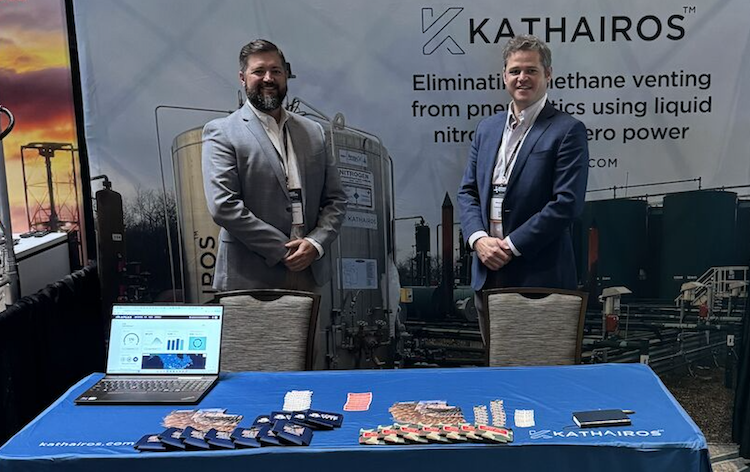
Kathairos has emerged as the leading North American solution for methane elimination from pneumatics, with more than 2,400 systems in operation across North America and over 70 major oil and gas producer partners.
In this post
Among the biggest challenges to global decarbonization are so-called hard-to-abate (HTA) sectors, which cannot be directly electrified through renewable power sources.
Major industries rely primarily on non-renewable sources, either for high-temperature energy or for chemical feedstocks. Tackling these industries will be crucial in achieving 2030 and 2050 emissions reduction pledges, so the question remains: how can HTA sectors be best addressed?
Clean hydrogen may just be the answer.
Hard-to-abate (HTA) sectors
Hard-to-abate (HTA) sectors are major industries that rely exclusively on fossil fuels, including iron and steel, cement, chemicals, and building materials.
These sectors are responsible for approximately 30% of yearly global CO2 emissions, and represent a significant challenge for mitigation.
While many of these industries recognize the need for decarbonization, finding sensible solutions is extremely difficult. Heavy-duty transport, for example, is significantly harder to electrify compared to passenger vehicles, as doing so would require enormous batteries. These would add to vehicle weight and take a considerably long time to charge, making them inefficient.
China's Challenges
As increasingly more countries explore paths toward decarbonization, many are in pursuit of strategies focused on renewable power generation and electric transport, including the United States and much of Europe.
China, on the other hand, faces a different set of challenges owing to a carbon emissions profile that depends largely on HTA heavy industries. For instance, China remains the world’s larges producer of iron, steel, cement, and building materials.
Clean Hydrogen
Emerging research has posited the potential use of clean hydrogen to decarbonize HTA sectors in China and achieve reduction targets ahead of 2030 and 2060.
Hydrogen producers, industry professionals and government bodies alike have developed different categories of hydrogen depending on the energy sources used in the production process.
For instance, green hydrogen is made by splitting water molecules using renewable electricity, while blue hydrogen is produced through conventional means from fossil fuels but combined with carbon capture and storage.
Hydrogen: The answer to China's problem?
A new paper from a collaborative research program between the United States and China revealed that the use of clean hydrogen in HTA sectors can save $1.72 trillion in investment costs and avoid a 0.13% loss in aggregate GDP.
It is the first study to date to use integrated modelling to evaluate the use of clean hydrogen across the Chinese energy landscape and economy, in an attempt to achieve its 2060 net zero objective.
This study focused on three main questions: What primary challenges exist in decarbonizing HTA sectors? What are the potential roles for clean hydrogen as an energy carrier as well as a feedstock, in HTA sectors? Would large-scale application of clean hydrogen in HTA sectors be cost effective, especially when compared to alternative approaches?
In the integrated model, the researchers included supply and demand across sectors, emphasizing under-researched HTA sectors, to analyze the cost effectiveness and role of clean hydrogen across China’s economy.
The results were promising, showing that the widespread application of clean hydrogen in HTA sectors can definitely help China achieve carbon neutrality cost-effectively, compared to a scenario without the production and use of hydrogen.
Clean hydrogen can save $1.72 trillion in investment capital, as well as avoid a 0.13% loss in aggregate GDP between 2020 and 2060. Further cost analysis demonstrated that over time, green hydrogen would be most cost effective, with cost coming down to $1.2/kg by 2050.
"China has rich untapped resources of solar and wind energy, both onshore and offshore," explains Chris Nielsen, co-author of the research paper and the Executive Director of the Harvard-China Project. "These resources give China advantages toward developing green hydrogen for use in its industrial and transportation sectors."
Explore more posts from Kathairos

RSVP: North America’s Best Energy, Oil & Gas Conferences and Events in 2026
.png)
What You Need to Know About Canada’s Final Methane Regulations—and How They Align with the Alberta MOU

